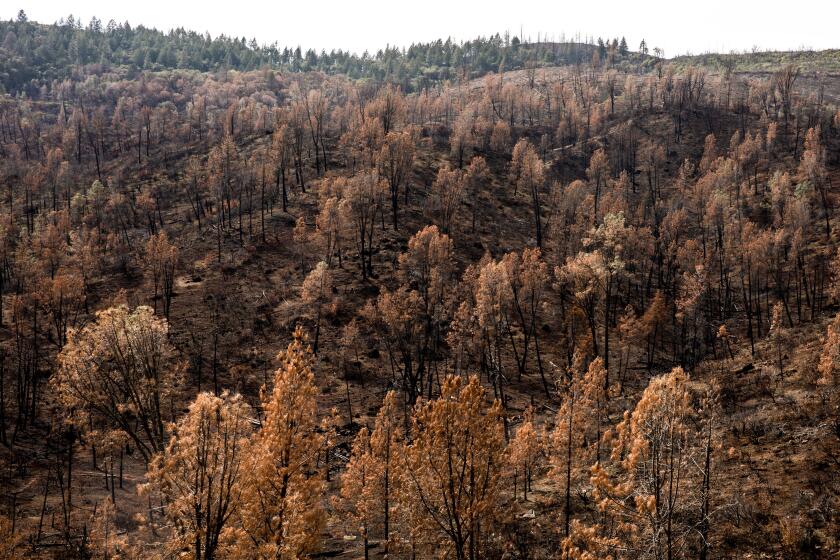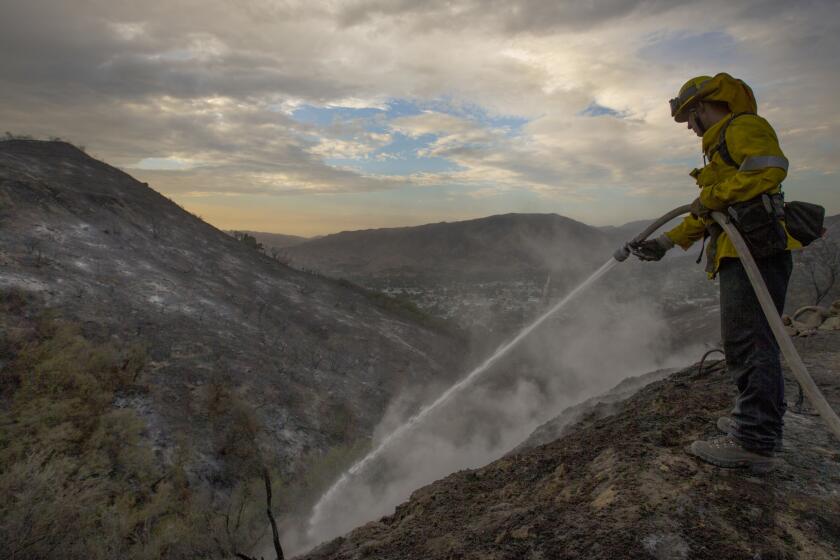New luxury L.A. hillside development in severe fire danger zone brings protests. ‘Just not safe’

- Share via
A 20-year battle over the fate of a rugged, verdant hillside in Los Angeles is barreling toward an epic conclusion as developers move forward with plans to construct a luxury housing project in the Verdugo Mountains, above the Sunland-Tujunga neighborhood.
The Canyon Hills development project, approved by the Los Angeles City Council in 2005, is awaiting one final rubber stamp before crews can begin clearing hundreds of acres to make way for 221 homes.
Nevada-based developer Whitebird Inc. says it is within its rights to proceed with the project, which was granted a 20-year window of completion when it was initially approved nearly two decades ago.
But community members, neighborhood officials and other opponents say a lot has changed since then, and insist the development will harm wildlife in the area and put residents in the path of worsening wildfires. They’re calling for the project to be halted — or at least delayed — until a new environmental impact report can be conducted.
“I just think 20 years is a long time in terms of climate conversations and environmental concerns,” said Emma Kemp, a Tujunga resident and co-founder of the group No Canyon Hills, which began a campaign opposing the project. A petition it started in February has more than 165,000 signatures.
“Before you start chopping down this mountain based on a report that was conducted in 2003, can we just reassess so we can make sure that we are taking really responsible precautions?” she asked. “You know, once you cut it up, you can’t go back.”
A court has ruled that Lake County failed to properly analyze how a Guenoc Valley development would affect evacuation routes in times of wildfire.
The project site runs north of the 210 Freeway and offers sweeping vistas of Los Angeles. On a recent hike around the area, the landscape was alive and buzzing with insects and green vegetation fueled by this year’s wet winter.
Adam Gelbart and Devon Christian, two amateur naturalists who regularly comb the hills there, have spotted a number of plants and critters they say would be threatened by the project, including live oak trees, rare bumble bees and lizards, and the critically imperiled Davidson’s bush mallow plant, which grows only along the Central Coast and in the hills around Tujunga.
“These are the last crumbs of a much larger ecosystem,” Christian said as he swished through chaparral and knee-high brush. “These ecosystems support a myriad of life — not only insects but also birds, larger carnivores. It’s all tied together, and if you see it within the larger context of biodiversity loss across the planet, we really need to fight to protect any last scrap of biodiversity that’s out there.”
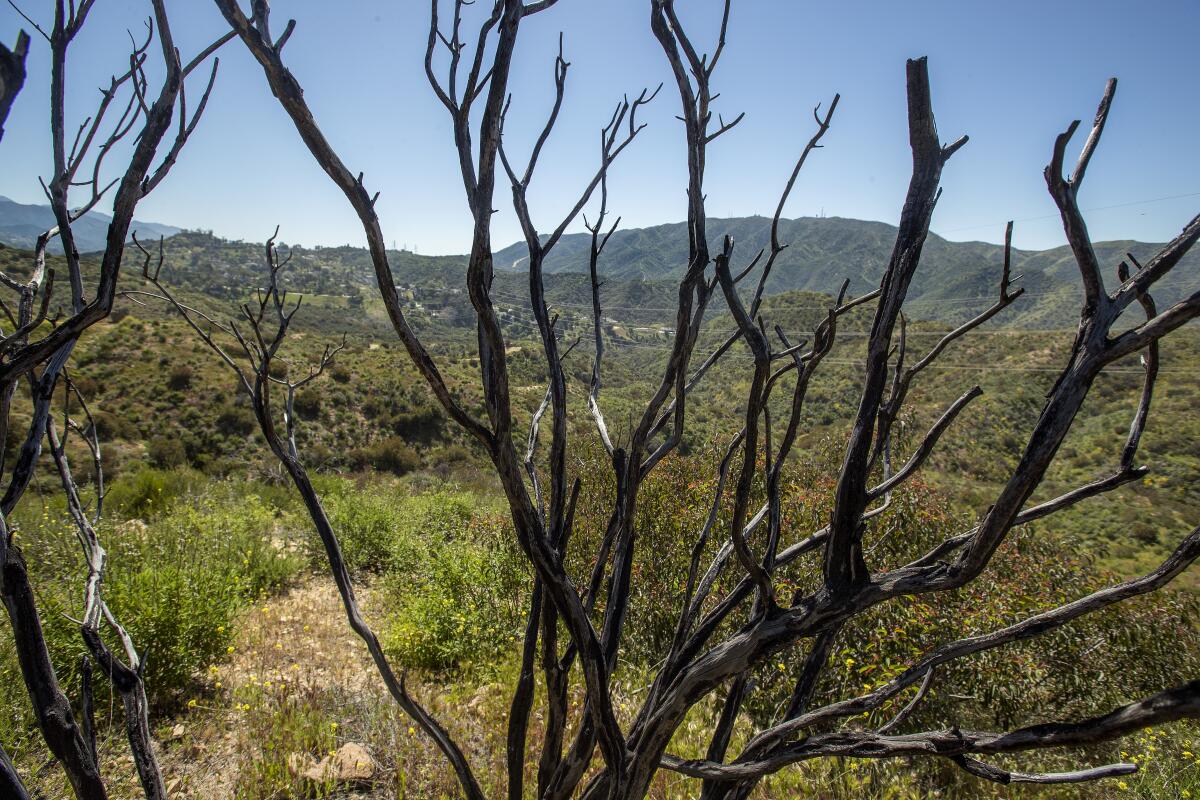
Residents have also spotted mountain lions in the area, which alone should be enough to warrant a new environmental impact report, opponents say. Southern California’s mountain lions have reached a critical threshold in recent years as human development squeezes the landscape and leaves lions in the path of speeding cars.
The environmental impact report, finalized in 2004, found no evidence of mountain lions or bobcats at the time. And while the city’s development agreement acknowledges that “significant and unavoidable impacts will result from implementation of the project,” it concludes that “the benefits outweigh and override” such impacts.
Cited benefits include providing a substantial amount of high-quality housing to accommodate population growth in the area, as well as the creation of hundreds of construction jobs. The agreement also states that the project will replace old oak trees with new plantings that will benefit the habitat, and will decrease fire risk in the area by introducing fuel modification zones.
The average California mountain lion is more likely to die at the hands of a human than of natural causes.
But in the nearly two decades since that agreement was approved, at least three wildfires have seared the area, including the La Tuna fire of 2017, which burned about 7,200 acres and destroyed five homes. The remnants of charred trees and structures can still be seen in the hills today.
The community was also threatened by the Station fire of 2009 and the Sand fire of 2016, both of which prompted the evacuations of thousands of people. Sunland-Tujunga Neighborhood Council President Lydia Grant said she fears the project will leave more residents in harm’s way.
“Our community is a high fire danger area, and we do everything we can to keep the building off the hillsides because it’s just not safe,” she said. The Los Angeles Fire Department ranks the area as a very high fire hazard severity zone.
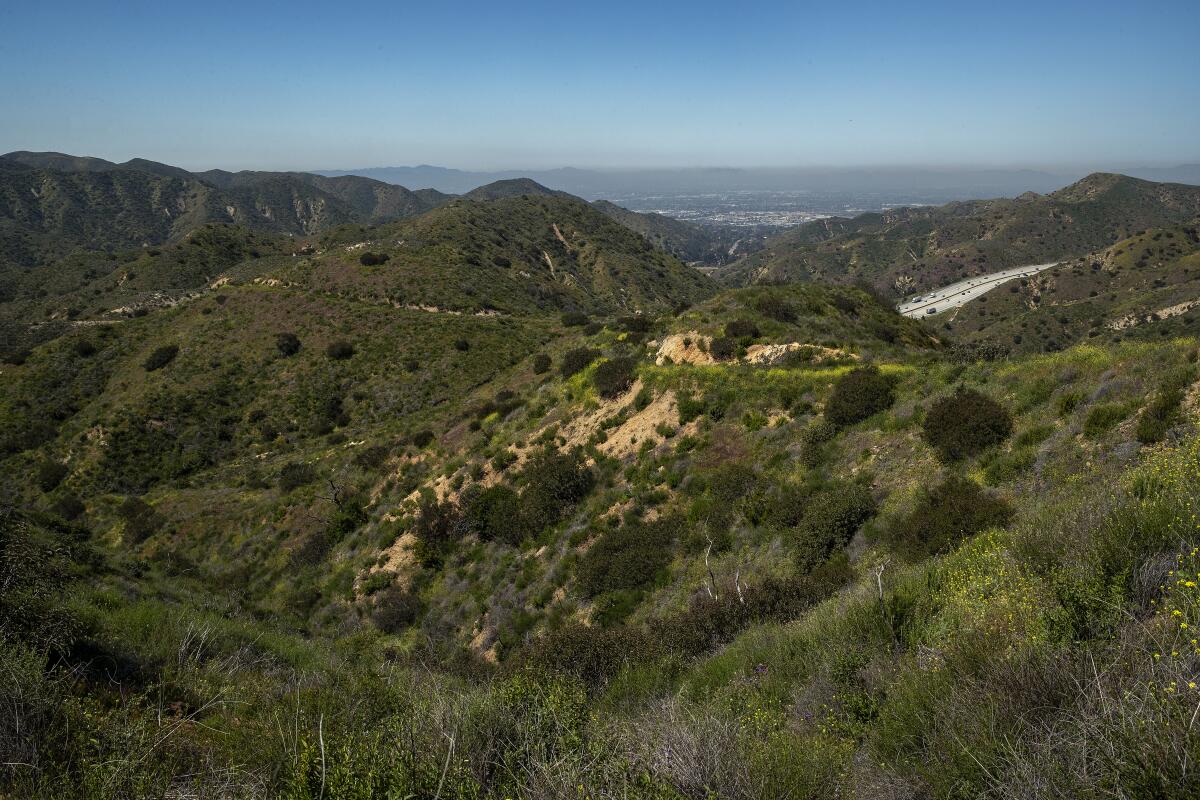
Grant said adding more homes and people to the wildland-urban interface could also put pressure on the community during an evacuation. The two major arteries in the area, Foothill Boulevard and La Tuna Canyon Road, have both been “road-dieted” from two lanes to one in recent years, she said.
“Now you’re adding that onto one lane in a high fire danger area. … This is just adding gasoline to a fire,” Grant said.
Such conditions are not unlike those that spurred a judge to pause a luxury development project in Lake County last year until further assessments of wildfire evacuation routes could be completed. Judges in recent years have also halted developments in a fire-prone part of San Diego County and the Tehachapi Mountains in Los Angeles County due to fire risk.
Grant said she has not heard from any community members in favor of the development. Los Angeles City Councilwoman Monica Rodriguez, who represents the area, declined to speak with The Times about the project.
A fast-moving brush fire is tearing through the Verdugo Mountains north of downtown Los Angeles.
Jack Rubens, an attorney for the developer, rejected the claims about fire danger, saying the project will in fact reduce the wildfire risk for existing residents to the north and east of the site by providing a new southern evacuation route to La Tuna Canyon Road and the freeway.
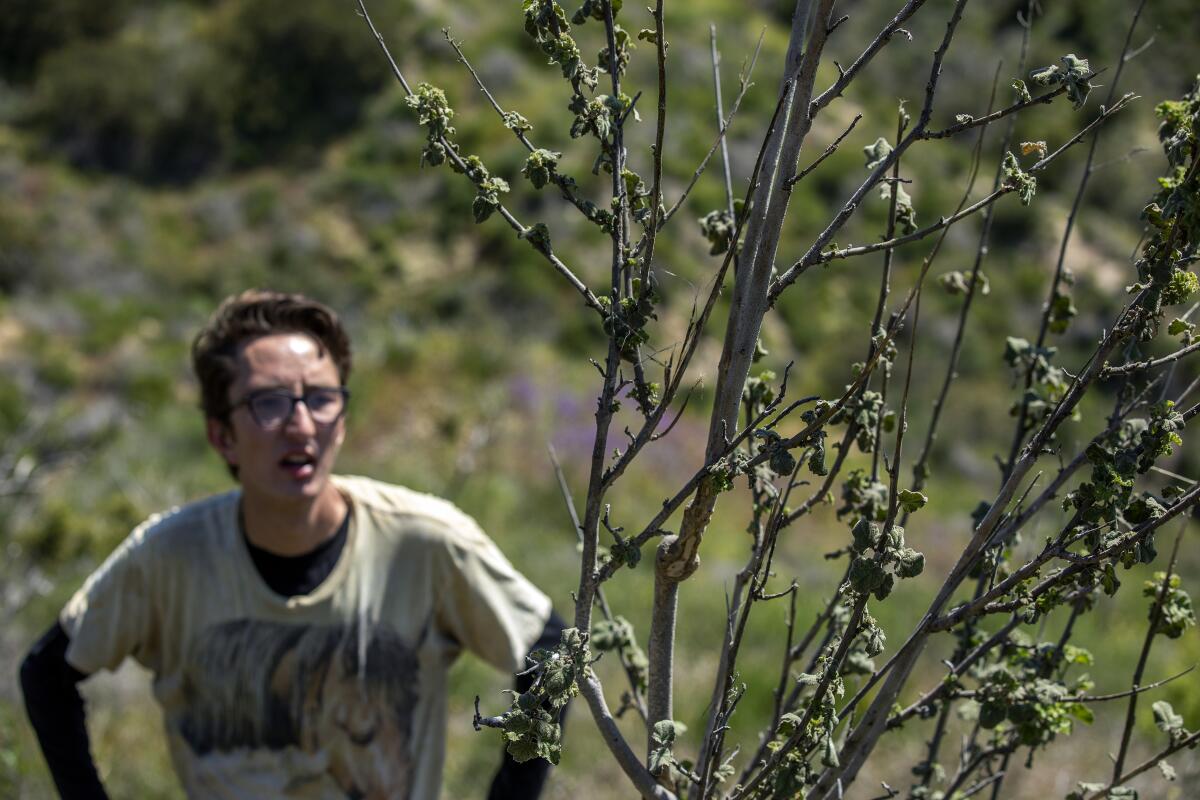
The project will also include a new million-gallon water tank close to the existing neighborhoods, which can be used by firefighters “who will have far superior access to the hillside after the project’s road system is constructed,” Rubens said. He added that future residents of the development will also be protected by a 200-foot-wide fuel modification zone that includes about 100 acres of land.
Rubens said concerns about mountain lions are similarly unfounded and noted that the original environmental impact report determined that the project would not interfere with local or regional movement of the animal. Should such movement occur, it would be outside of the development area, he said.
He added that in the wake of the initial approval, Whitebird and developer Rick Percell agreed to eliminate a portion of the project site south of the 210 Freeway, donating about 600 acres of land to an affiliate of the Santa Monica Mountains Conservancy for permanent preservation, so “the public has therefore already received an enormous public benefit,” he said.
Paul Edelman, deputy director of the Santa Monica Mountains Conservancy, said developing the remaining acres would still amount to a considerable ecological loss.
“As a mountain range, [the Verdugos] are big enough to sustain subpopulations of all the animals we’re concerned about, and that is the key, because they’re just big enough to do that,” he said.
“As you start to take big chunks out of it, it degrades the whole system — you don’t have enough critical mass for one or two mountain lions or a healthy bobcat population,” he said. “It’s already so small that taking a big chunk out of it hurts a lot more than, say, if the equivalent-sized development happened in the Santa Monica Mountains.”
Home builder has scaled back his plan in an area that’s still largely wild. Opponents fear it will start a slow march of houses up the hillsides.
He and other opponents of the project acknowledged that the city’s hands are probably tied by the agreement, especially in this eleventh hour.
Whitebird recently pulled a grading permit that would allow it to begin leveling the pads for properties as soon as it’s approved. City officials could face a lawsuit from the developer should they try to intervene.
Under the agreement, additional environmental clearance could be required under the California Environmental Quality Act if there are substantial changes in the project, including new information showing that the project will have “new or more severe significant effects” than those described in the original environmental impact report.
Rubens said that’s a moot point. A second report cannot be lawfully required as the project is “fully entitled and doesn’t require any further discretionary approval simply because its development has been delayed,” he said.
“The project was approved after a five-year administrative process with significant community involvement and, by the way, those approvals were not challenged in court,” he added.
Dean Wallraff, an attorney who has been fighting the development for decades, said the city probably will agree. But it’s possible some elements of the grading permit could contain enough modifications to trigger a new report.
“Twenty years ago, they approved this project that has now all kinds of extra environmental effects, and it’s in this kind of sensitive area in the middle of the city, and if this goes forward now without anybody looking at it again — that doesn’t make sense,” said Wallraff, executive director of Advocates for the Environment.
The name Tujunga is derived from the Tongva term for “old woman of the earth,” so it’s no surprise that the character of the area from the Spanish conquest to the opening of the 210 Freeway was predominantly one of pastoral rusticity.
The Verdugo Mountains and surrounding areas were originally home to the Chumash, Gabrielino/Tongva and Fernandeño Tataviam tribes, and some members have spoken against the project.
“We believe in protecting the last remaining open spaces of L.A. County,” said Nathan Nuñez, Gabrielino Indigenous cultural keeper. “These places are important to our people, but they’re also important to the broader community. We have to do the work that we can do now to protect these places before they get lost to development.”
He worried about the potential presence of archaeological artifacts in the area because the hills and nearby areas once served as transportation corridors, campsites and places for gathering, hunting and ceremonies for the tribe.
His father, cultural bearer Kevin Nuñez, said he understands that the situation is complicated, but hoped politicians and decision makers would “pump the brakes.”
“I think there are options, but it takes some diligence, it takes some intestinal fortitude, to step up and say hold on, we’re going to vet this well,” he said.
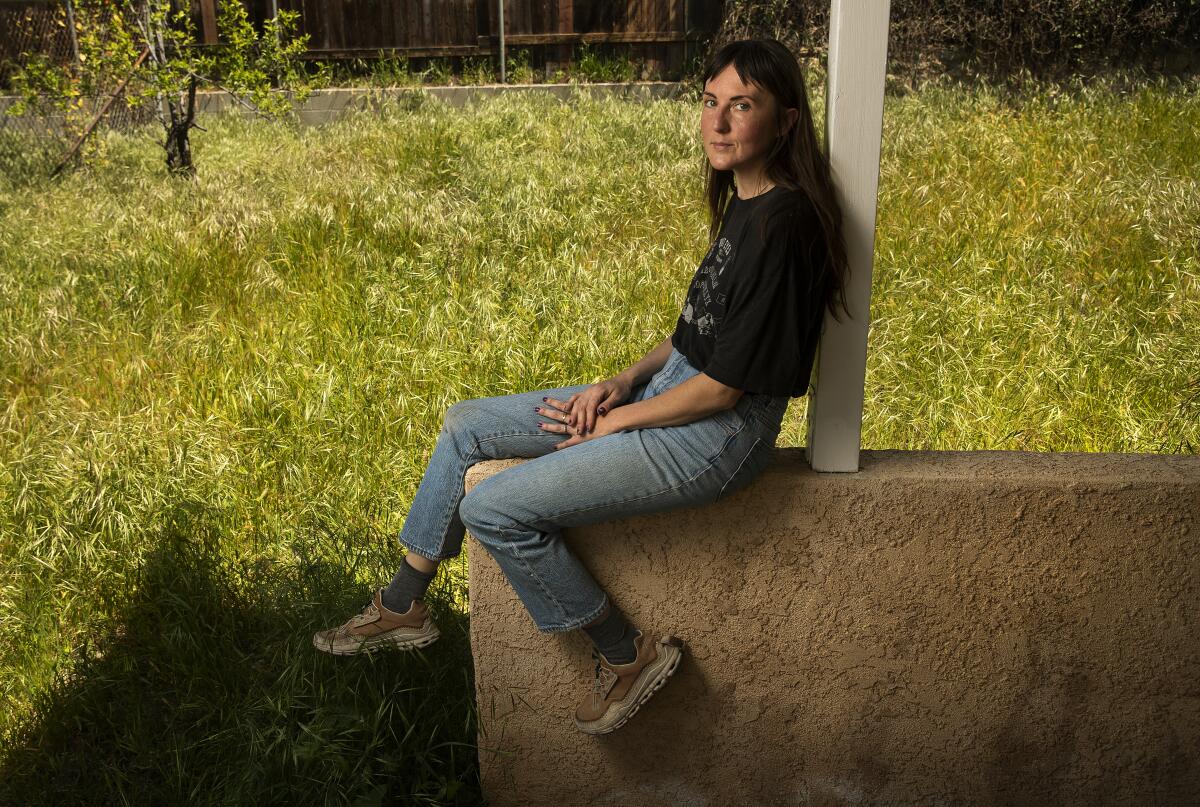
Kemp, of the No Canyon Hills group, said the average lot size for the planned homes is about 17,000 square feet, with some as large as 100,000 square feet. It’s an equity issue as much as it is an environmental one, she said.
“Tujunga is one of the more affordable neighborhoods in and around urban L.A., and it is more rural and it’s definitely more working class … so how can you justify putting in a gated community of luxury mansions in this area?” she said. “What is the benefit to our community?”
However, she said she does not see the group expressing NIMBYism, an anti-development stance that stands for “not in my backyard.”
“I do understand that this developer has his project approved, and he wants to proceed with his plan. I do understand that,” she said. “It just feels that we have this very slim opportunity to do better by the environment, by current community members, by plants, animals and other species, and just to ensure that this is a viable and responsible and worthy project.
“And if things need to change about it,” she added, “then we can make those changes and find a position that works for everyone.”
Hiking through the brush, Gelbart and Christian, the naturalists, said California’s climate conditions are changing so rapidly that it’s difficult for even ecological experts to keep up — much less developers. The pair recently found a massive hollyleaf cherry tree growing in the hills that they hadn’t seen before.
“The land has value beyond what humans use it for,” Gelbart said as he surveyed the view. “And once this is gone, you can never put it back together.”
More to Read
Sign up for Essential California
The most important California stories and recommendations in your inbox every morning.
You may occasionally receive promotional content from the Los Angeles Times.
